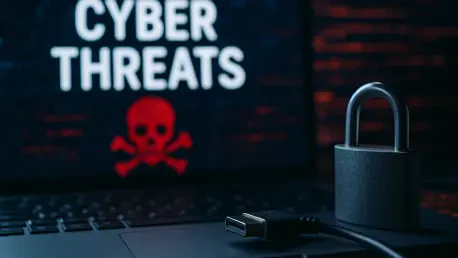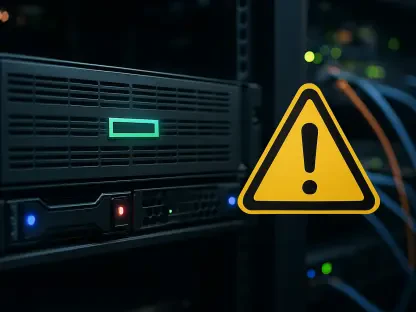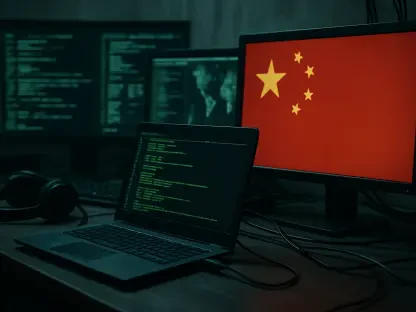In an era where cybersecurity threats are constantly evolving, understanding the complexities of modern cyber attacks is crucial. Rupert Marais, a seasoned expert in cybersecurity, sheds light on the intricate OneClik campaign. Known for his deep knowledge in endpoint security and cybersecurity strategies, Marais offers insights into how attackers leverage legitimate technologies like Microsoft’s ClickOnce to launch sophisticated attacks. The campaign, marked by its evasive methods and advanced backdoors, raises the bar for what defenders must anticipate in a threat landscape that continually shifts.
Can you explain what the OneClik campaign is and which sectors it targets?
The OneClik campaign is a sophisticated cyber attack targeting the energy, oil, and gas sectors. It exploits Microsoft’s ClickOnce technology and incorporates Golang backdoors to compromise targeted organizations. This approach signifies a shift towards more stealthy and strategic methods of infiltrating and establishing persistent threats within vital industries.
How does Microsoft’s ClickOnce technology become a tool for cyber attackers in the OneClik campaign?
Microsoft’s ClickOnce deployment technology is typically used to install Windows-based applications with minimal interaction from users. In the OneClik campaign, attackers use it to execute malicious payloads, taking advantage of its reliance on a trusted Windows binary, “dfsvc.exe.” Because it allows for limited permissions, the technology helps attackers avoid the need for privilege escalation, thus evading detection while executing malicious code.
What is RunnerBeacon, and what role does it play in the OneClik attacks?
RunnerBeacon is a Golang-based backdoor employed in the OneClik campaign. It communicates with the attacker’s infrastructure through obscured AWS cloud services. Its role is critical, as it executes malicious operations, offers anti-analysis features, and facilitates control over infected systems by supporting various network operations like port scanning and process termination.
Can you elaborate on the term “living-off-the-land” tactics mentioned in the campaign?
“Living-off-the-land” tactics involve using existing tools and features within the target’s environment for malicious purposes, avoiding suspicion. In the OneClik campaign, attackers blend their activities into legitimate cloud and enterprise tools to go undetected, making it challenging for traditional security measures to identify the threat.
How does the OneClik campaign bypass traditional detection mechanisms?
The OneClik campaign evades traditional detection by blending malicious activities with trusted applications and services. By masquerading as ClickOnce applications and leveraging cloud services like AWS, it avoids creating anomalies that would typically trigger security alerts, allowing the attackers to operate under the radar.
What specific technique is used to execute the malicious code in the attack chain?
In the OneClik campaign, attackers use the AppDomainManager injection technique to execute malicious code. This involves injecting code into a ClickOnce loader, which allows execution of encrypted shellcode in memory, leading to the deployment of the RunnerBeacon backdoor without leaving noticeable traces.
Can you describe the functionalities and capabilities of the Golang backdoor used in this campaign?
The Golang backdoor in this campaign is versatile and powerful, capable of interacting with C2 servers over various protocols such as HTTP(s) and WebSockets. It can perform file operations, execute shell commands, and even escalate privileges, all while employing anti-analysis methods and providing services like port forwarding and proxy features.
How are AWS cloud services involved in masking the attacker’s infrastructure?
AWS cloud services are used to obscure the attacker’s infrastructure in the OneClik campaign. By integrating these services, the attackers can mask the origins of their C2 communications, making it difficult for defenders to trace or block their activities while taking advantage of the trust placed in AWS’s legitimate platform.
What are the similarities between RunnerBeacon and known Cobalt Strike beacons?
RunnerBeacon closely mirrors the functionalities of Go-based Cobalt Strike beacons, particularly with families like Geacon. Both utilize extensive command sets for operations such as shell access, process enumeration, and proxy handling. Their similar structures suggest RunnerBeacon might be an evolved or private variant optimized for stealthy cloud compatibility.
What kind of advancements were observed in the different variants of the OneClick campaign noted in March 2025?
By March 2025, several OneClick variants demonstrated significant advancements. Each iteration showcased enhanced capabilities designed to evade detection more effectively. These improvements enabled the campaign to operate with increased stealth and sophistication, making it a persistent threat to targeted sectors.
How is the AppDomainManager injection technique relevant to the OneClik campaign?
The AppDomainManager injection technique is pivotal in the OneClik attack chain. This method allows for seamless code injection within the ClickOnce loader, leading to the execution of malicious payloads without triggering security alarms. It highlights the attackers’ strategic focus on avoiding detection during critical phases of their operations.
Why does the campaign show signs of Chinese-affiliated threat actors, yet there is hesitancy in attribution?
While the campaign exhibits techniques and methods reminiscent of Chinese-affiliated threat actors, attribution is cautious due to the lack of definitive evidence and the possibility of such methods being used by multiple groups. This underscores the complexities and challenges in pinpointing a specific actor or group responsible for the attacks.
Can you detail the XSS vulnerability used by APT-Q-14 in a similar campaign?
APT-Q-14 exploited a zero-day XSS vulnerability in an email platform to deploy ClickOne apps, leading to a covert malware installation. This tactic leveraged unsuspecting victims by delivering phishing emails that automatically triggered the XSS flaw, facilitating the download of malicious software under the guise of legitimate content.
What is the relationship between APT-Q-14 and threat groups like DarkHotel?
APT-Q-14 is linked to several threat clusters including DarkHotel, which is aligned with South Korean interests. These groups share methodologies and targets, with APT-Q-14 specifically using zero-day email vulnerabilities similar to those employed by DarkHotel, suggesting a close operational or strategic alignment.
How did companies like QiAnXin identify and analyze these campaigns?
Companies like QiAnXin uncovered and analyzed these campaigns by dissecting attack patterns, exploiting zero-day vulnerabilities, and tracking similar incidents across different platforms. Their efforts to identify threat actors and understand the attack vectors provided critical insights into techniques and intentions behind such campaigns.
What is the Bring Your Own Vulnerable Driver (BYOVD) technique, and how was it used by DarkHotel?
The BYOVD technique involves leveraging pre-existing, vulnerable drivers in the system to disable security software and execute malicious payloads. DarkHotel used this method to terminate Microsoft Defender and implement malware through deceptive phishing attempts, illustrating a shift towards exploiting inherent system weaknesses.
How does Trellix describe the OneClik activity in terms of red team simulation?
Trellix characterizes the OneClik activity as a red team simulation, mimicking nation-state tactics. This simulated exercise demonstrates how attackers—or defenders simulating them—can successfully integrate into cloud and enterprise environments, employing “living-off-the-land” strategies to circumvent traditional defenses.
In what ways does the red team effort mirror real-world adversarial tactics?
The red team effort mirrored real-world tactics by deploying realistic threats, exploiting trusted technologies, and utilizing stealthy methodologies reminiscent of advanced persistent threat (APT) operations. These exercises simulate genuine adversarial strategies, providing a critical understanding of potential vulnerabilities and defense gaps.
Do you have any advice for our readers?
Stay vigilant and continuously update your cybersecurity measures. The evolving threat landscape requires proactive defense strategies and awareness of new tactics like those seen in the OneClik campaign. Invest in comprehensive training and robust detection tools to counteract increasingly sophisticated cyber threats effectively.









